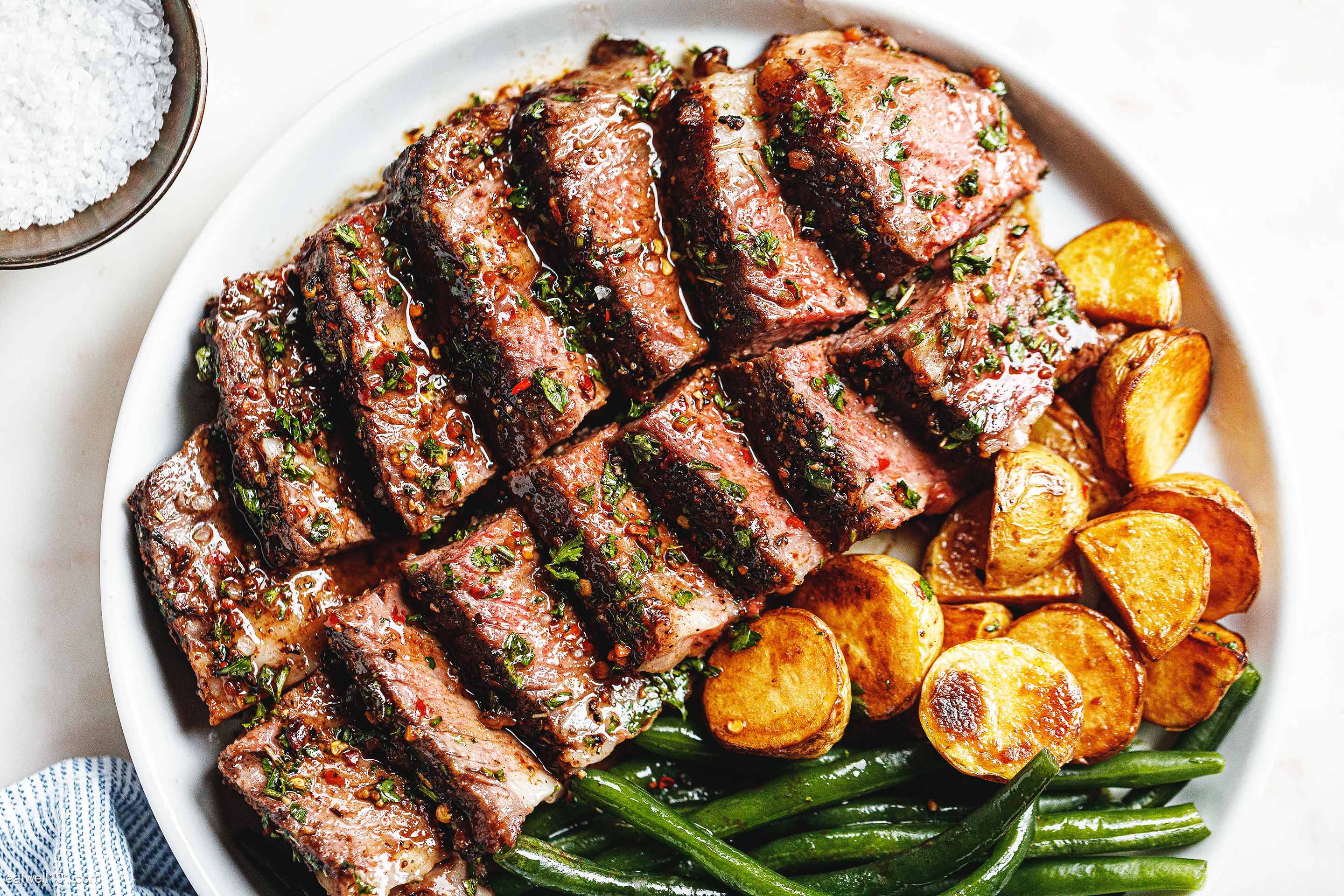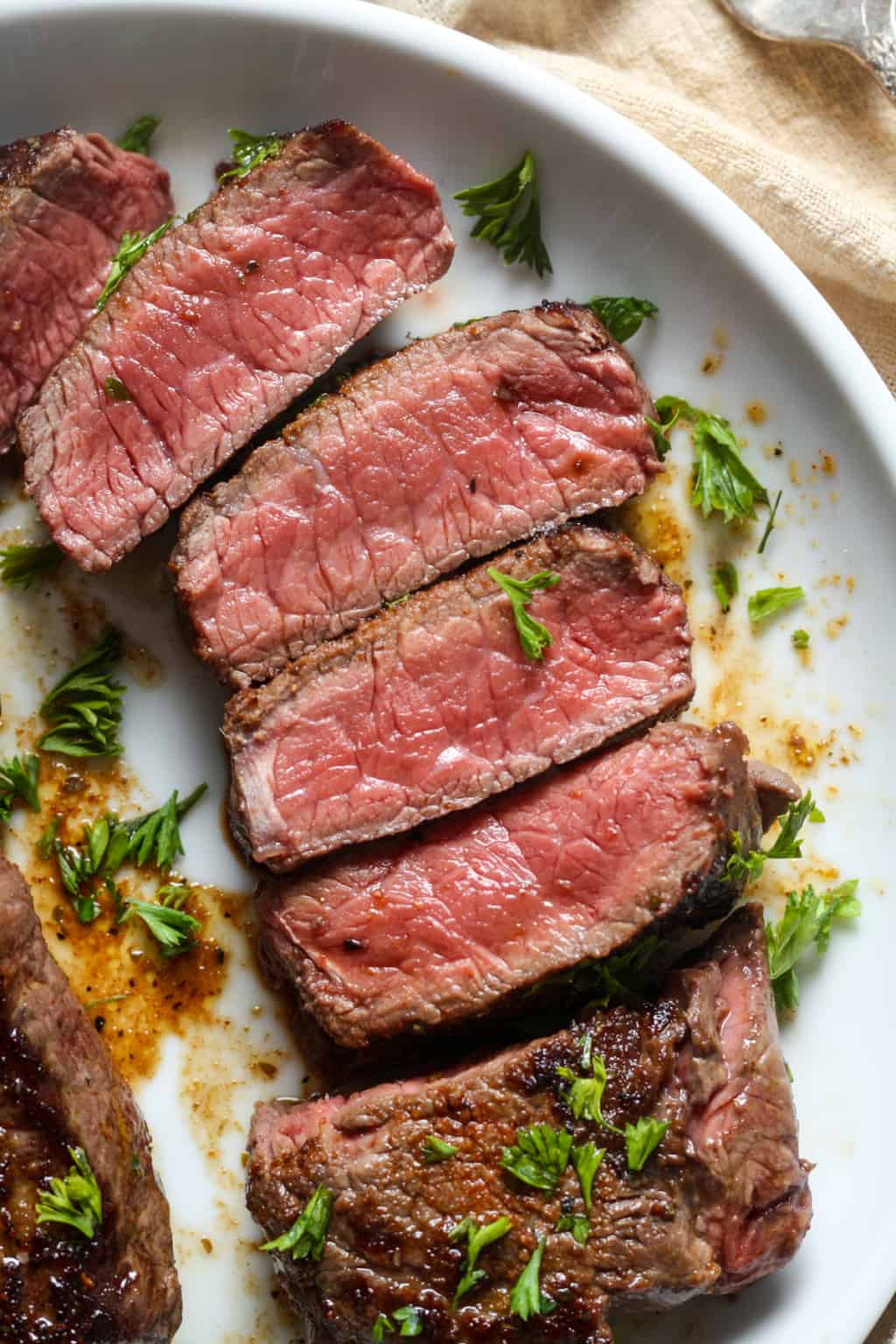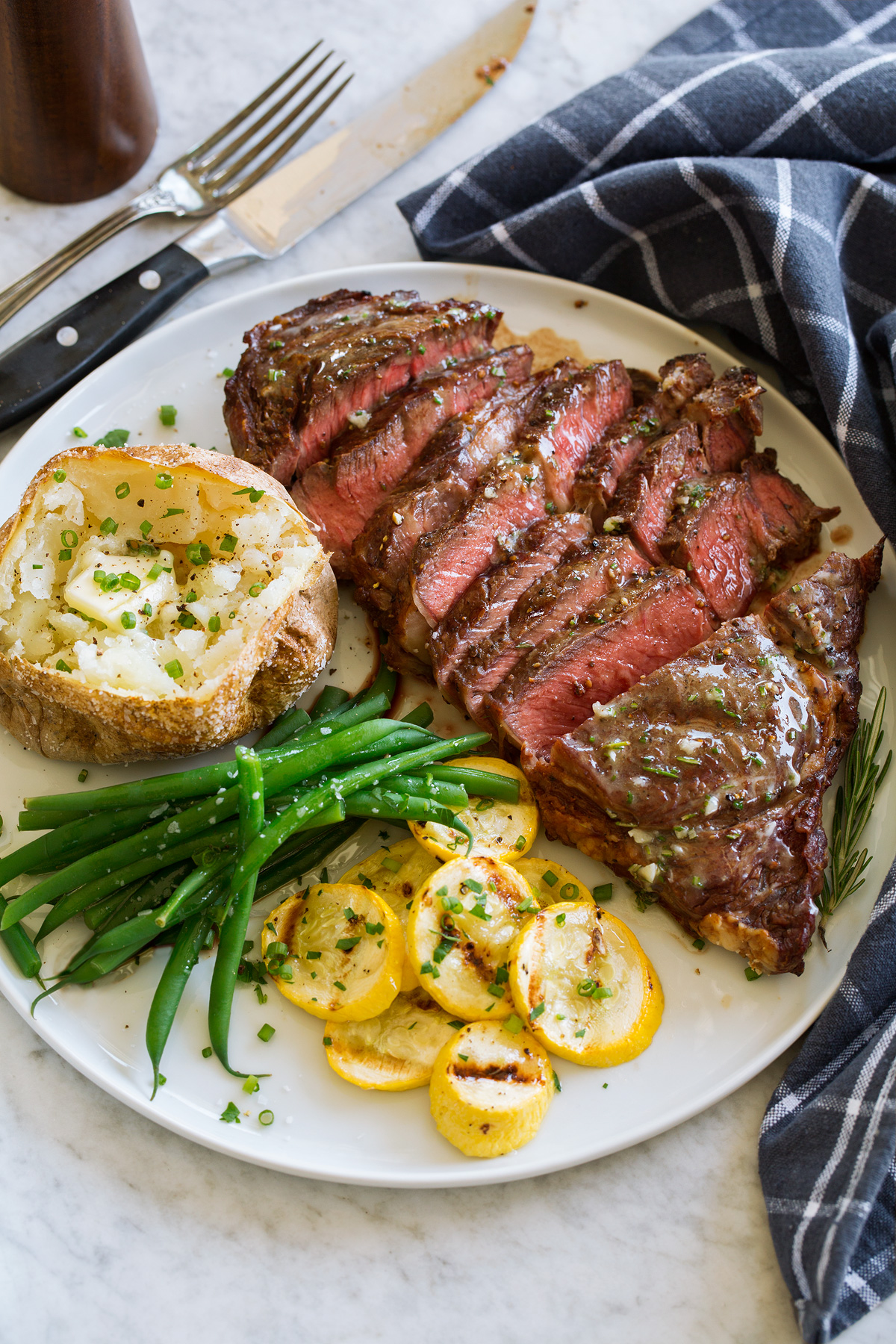There's something truly special about a well-cooked piece of beef, isn't there? Whether you're placing it on a hot grill, giving it a good sear in a pan, or slowly warming it in the oven, steak always makes for a straightforward and truly delicious meal. It's a go-to for many, and for good reason, offering a satisfying experience that just feels right for dinner, or even a robust lunch, so.
Most people have a favorite way they like their steak prepared, a particular level of "doneness" that brings them the most enjoyment. For some, it's very pink, almost cool in the middle, while for others, it's cooked all the way through. Yet, there's a widely appreciated sweet spot that many consider the peak of steak perfection, a sort of golden standard for juiciness and taste, you know.
That sweet spot, that ideal level of cooking, is often medium rare. It's where the steak keeps its tender texture and a beautiful pink heart, providing a truly rich flavor. Getting it just right involves a little bit of know-how, but it's completely achievable at home, and we're going to explore what that means for your next cooking adventure, basically.
- Melissa Oneil Les Miserables
- What Is Andy Garcias Net Worth
- Dubai Bling Cast
- Via Ssh Raspberry Pi Device From Anywhere
- Robert Sheehan
Table of Contents
- What Makes a Steak Dinner So Appealing?
- Getting to Know Your Cuts for the Perfect Steak Temperature Medium Rare
- How Do You Achieve Steakhouse Quality at Home?
- Understanding the Science Behind Steak Temperature Medium Rare
- What Internal Temperature Should Your Steak Reach?
- Your Guide to a Spot-On Steak Temperature Medium Rare
- Are There Simple Ways to Cook Steak for Everyone?
- Final Thoughts on Achieving Your Ideal Steak Temperature Medium Rare
What Makes a Steak Dinner So Appealing?
A good steak dinner just hits differently, doesn't it? It has this way of feeling both fancy and comforting all at once. The smell of it cooking, the way it looks on the plate, and that first tender bite—it's an experience that really satisfies. People often choose steak for special occasions, but it's also a surprisingly easy choice for a regular weeknight meal, too it's almost.
Think about it: you can throw a steak on the grill, and the smoky goodness it picks up is just incredible. Or, if the weather isn't cooperating, a hot pan on the stove can give you that beautiful, browned outside. Even roasting it in the oven can yield wonderful results, making it soft and juicy. There are so many ways to bring out the best in a piece of beef, and each method offers a slightly different kind of pleasure, in a way.
Steak isn't just for a standalone plate either. It can transform something simple, like a green salad, into a really filling and enjoyable meal. Imagine a fresh salad with slices of perfectly cooked steak on top – it turns a light bite into something much more substantial, great for lunch or dinner. It's very versatile, and that's part of its charm, honestly.
- Drew Barrymore Children Ages
- Ariane Bourdain
- Lion Guard Cast
- Paw Patrol Characters Names
- Instagram Clear Cache Iphone
Getting to Know Your Cuts for the Perfect Steak Temperature Medium Rare
When you're aiming for that ideal steak temperature medium rare, knowing a little about the different cuts can make a real difference. Each type of beef has its own character, its own way of cooking and tasting. For instance, in some parts of the world, like New England, sirloin tips are a big favorite. These are usually cut from a specific part of the sirloin, and sometimes, if you get a larger piece, it might be called sirloin flap, or even just flap steak, so.
For those just starting out with grilling, certain cuts are a bit more forgiving and tend to give great results. A ribeye, with its lovely streaks of fat, or a strip steak, which has a good balance of tenderness and flavor, are often suggested as good choices for beginners. They handle the heat well and often come out tasting fantastic, which is that, really.
The grill, as we mentioned, gives any steak a really pleasant taste, a sort of smoky depth you can't quite get elsewhere. But beyond grilling, you might find yourself working with other cuts, perhaps something like round steak, which is often used in recipes designed for a simple weeknight meal. The key is to understand how each cut behaves when it meets the heat, and how that impacts your quest for the perfect steak temperature medium rare, you know.
How Do You Achieve Steakhouse Quality at Home?
Many people dream of making steak at home that tastes just like what you get at a really good restaurant. It might seem like a secret, but it's actually quite possible with a few straightforward methods. One popular way is to cook your steak right in your oven. This can give you results that are surprisingly similar to what a professional kitchen produces, actually.
Beyond just the oven, there are some clever techniques that chefs use that you can try too. Have you heard of reverse searing? It's a method that works especially well for thicker pieces of steak. You cook the steak slowly at a lower temperature first, often in the oven, and then you finish it with a quick, hot sear in a pan or on the grill. This approach helps create a lovely browned outside while keeping the inside wonderfully juicy, and it’s very effective, basically.
There are also methods that use sheet pans, which can make cleanup a breeze while still getting a good cook on your steak. The idea is to pick the technique that suits the cut of meat you have and the kind of result you're hoping for. It's about finding the right path to that satisfying steak dinner, more or less, at the end of the day.
Understanding the Science Behind Steak Temperature Medium Rare
Why do so many people prefer their steak cooked to a medium rare level? There's a good reason for it, and it has to do with how the meat changes as it warms up. When you cook a steak to medium rare, you're allowing the fat within the meat, often called marbling, to soften and melt a bit. This melting fat then mixes with the meat's juices, adding a tremendous amount of taste and keeping the steak moist and tender, you know.
At this specific doneness, the steak still has a distinct pink center, but it's not raw or cold. It's warm, soft, and offers a delightful chew. This balance between a tender feel and a rich taste is what makes medium rare such a popular choice for many meat lovers. It’s a very particular point where the meat truly shines, so.
The internal warmth is what really dictates this. It's not just about how long you cook it, but about reaching a precise warmth inside the steak. This precision is what helps keep the meat from drying out and ensures that delightful texture and flavor. It’s a little bit of science, but it’s totally approachable, really.
What Internal Temperature Should Your Steak Reach?
To get your steak just the way you want it, especially if you're aiming for that perfect medium rare, the most important tool you can have is a reliable meat thermometer. Guessing can lead to disappointment, but a thermometer gives you a clear answer about what's happening inside your meat. It takes all the guesswork out of it, which is nice, you know.
For a steak that's cooked to medium rare, you're looking for an internal warmth typically between 130°F and 135°F. At this range, the steak will have that appealing juicy, soft feel with a beautiful pink middle. It’s a pretty specific window, and hitting it consistently means a consistently good eating experience, you know.
While medium rare is a favorite for many, it's helpful to know that different levels of doneness correspond to different internal temperatures. Rare steaks will be cooler inside, and well-done steaks will be much warmer, with no pink remaining. But for that ideal balance of softness and flavor, that 130°F to 135°F range is where you want to be for your steak temperature medium rare, pretty much.
Your Guide to a Spot-On Steak Temperature Medium Rare
So, how do you actually hit that sweet spot for steak temperature medium rare every time? It starts with your meat thermometer, as mentioned. You'll want to insert it into the thickest part of the steak, making sure it's not touching any bone, if there is one. This gives you the most accurate reading of the meat's warmth, so.
During cooking, a common approach is to turn the steak just once. This helps ensure an even cook on both sides and a nice outer crust. However, the real secret sauce is that internal temperature. You can find charts that list the ideal warmth for rare, medium rare, and well-done beef. Having one of these handy, perhaps a printed guide, can truly simplify the whole process, ensuring great outcomes consistently, in fact.
Remember, cooking a steak to your preferred level of doneness means hitting that exact internal warmth. For medium rare, it's all about that 130°F to 135°F target. It's a precise point that gives you that juicy, soft bite with a rich, pink center that many people adore. It’s about being patient and checking that thermometer, really.
Are There Simple Ways to Cook Steak for Everyone?
Absolutely, there are many simple ways to cook steak that can satisfy just about anyone, no matter their cooking skill. Steak doesn't have to be a complicated affair. As we've touched upon, whether it's a quick sear in a pan or a more relaxed roast in the oven, making a delicious steak is well within reach for most home cooks, you know.
The beauty of steak is its adaptability. You can find recipes that are incredibly straightforward, perhaps using just a few seasonings and a hot cooking surface. The goal is to make a satisfying steak dinner accessible any night of the week. This is why you see so many easy recipes out there, designed to get a great meal on the table without a lot of fuss, as a matter of fact.
While many people lean towards medium rare for its balance of taste and feel, everyone does have their own personal liking for steak doneness. Some prefer it a little less cooked, others a bit more. The important thing is that the techniques and tools, like a good meat thermometer, allow you to achieve *your* desired outcome, whatever that may be. It’s about personal enjoyment, after all, isn’t it?
Final Thoughts on Achieving Your Ideal Steak Temperature Medium Rare
Ultimately, getting your steak to that ideal steak temperature medium rare, or any doneness you prefer, comes down to a few key elements. Having a trusty meat thermometer is truly essential. It’s your most reliable friend in the kitchen when cooking beef, providing the clear data you need to avoid over or undercooking, basically.
Remember, the goal is to hit that sweet spot where the meat is tender, flavorful, and cooked just the way you like it. For medium rare, that means the 130°F to 135°F range, ensuring a juicy bite with a lovely pink middle. It’s about understanding that balance between softness and taste, which is a hallmark of this particular doneness, you know.
Don't be afraid to experiment with different cuts and cooking methods. Practice really does help you get a feel for it. With a little attention to internal warmth and the right tools, you can consistently enjoy steakhouse-quality results right there in your own home, and that’s pretty cool, right?
Related Resources:
Detail Author:
- Name : Leopold Haley Sr.
- Username : collier.bailey
- Email : jared68@gmail.com
- Birthdate : 1978-07-17
- Address : 12707 Lesch Avenue Carmellashire, PA 03472
- Phone : +1 (442) 931-6995
- Company : Schaefer, Gutmann and Wintheiser
- Job : Printing Machine Operator
- Bio : Dicta hic voluptas quia nisi. Accusantium reiciendis sed ex earum consequatur ullam. Esse consequatur omnis nesciunt sunt. Et quo nostrum saepe aperiam quia aut sit.
Socials
tiktok:
- url : https://tiktok.com/@zionlubowitz
- username : zionlubowitz
- bio : Est hic ut modi quis illo tempora illo.
- followers : 1650
- following : 1512
instagram:
- url : https://instagram.com/zion.lubowitz
- username : zion.lubowitz
- bio : Autem laudantium et quo. Ut voluptatem beatae velit sapiente.
- followers : 2136
- following : 1817


